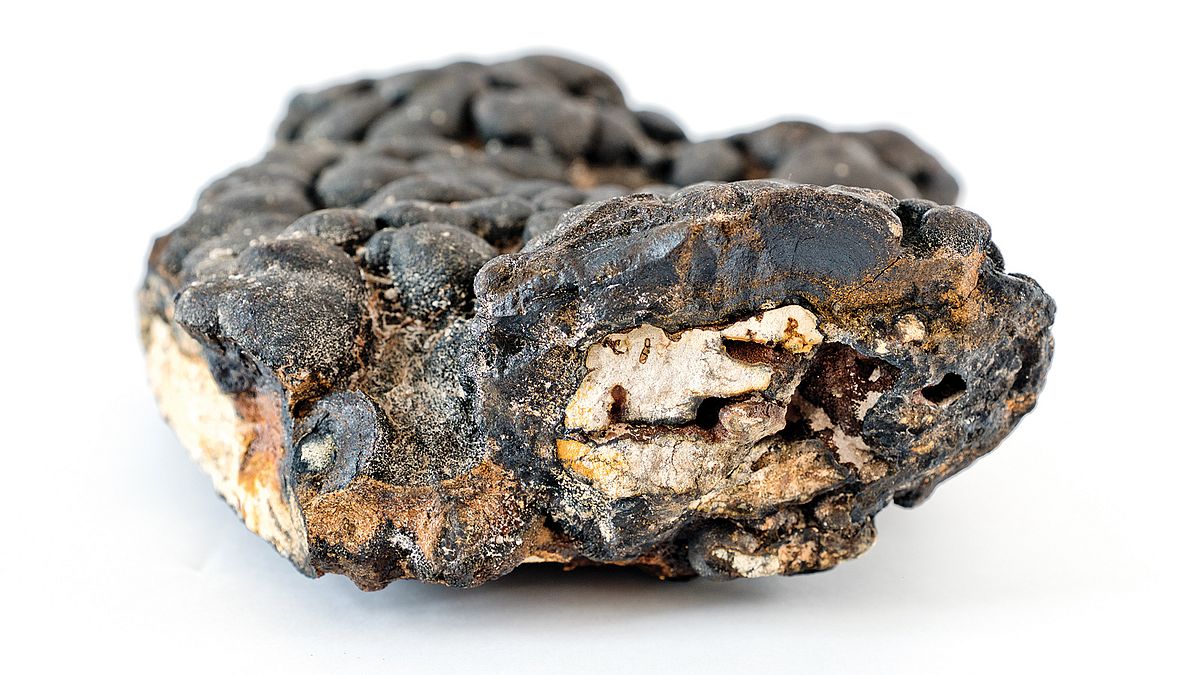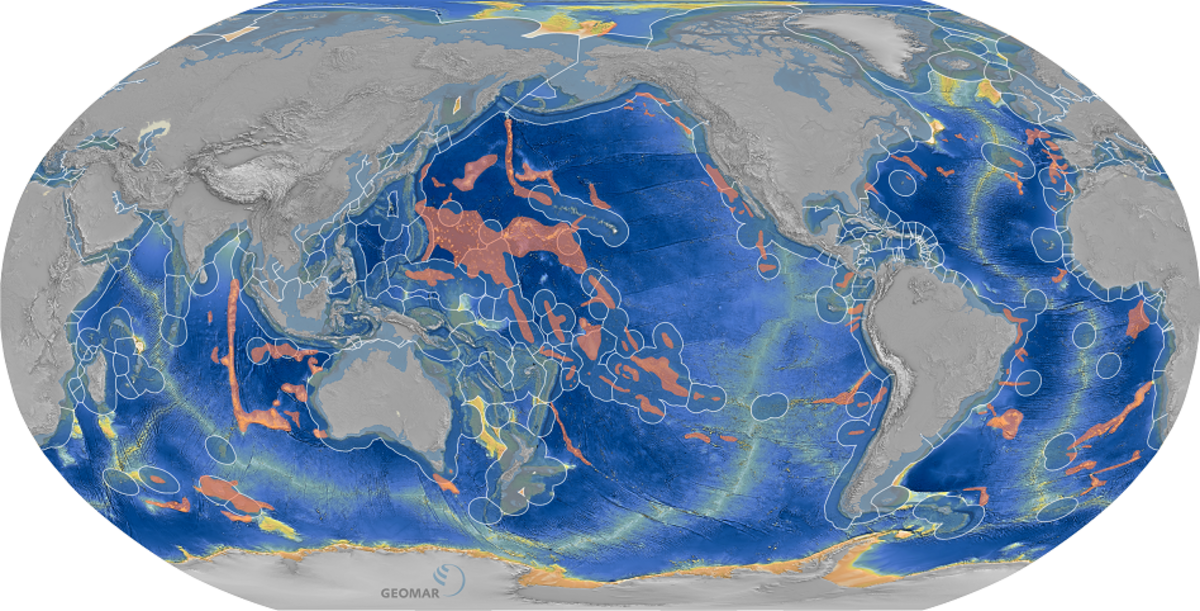Cobalt-rich ferromanganese crusts form on nearly all rock surfaces in the ocean that are free of sediment and are composed of manganese oxides and iron oxyhydroxides that precipitate directly from seawater (see Figure below). Their thickness varies from less than 1 mm to about 20 cm. They form at water depths of 600–7,000 m on the flanks of volcanic seamounts, ridges, and plateaus with the thickest and most metal-rich crusts forming in depths between 800 and 2,500 m. Due to their slow growth rate of only 1–5 mm/million years, economic occurrences are limited to old volcanic edifices. Many of these volcanic seamounts are located within the EEZs of Pacific Island states with fewer seamounts, and hence crusts, in the Atlantic and Indian Ocean. Ferromanganese crusts have, in general, lower copper and nickel concentrations than manganese nodules, and therefore, cobalt is the metal of greatest economic interest commonly exceeding values of 0.5 wt% cobalt. Other potential by-products are the rare earth elements (REE), platinum group elements, and tellurium. One estimate of the quantity of crusts in the central Pacific region has been given at 7,533 million dry tons, containing about four times more cobalt, three and a half times more yttrium, and nine times more tellurium than the entire land-based reserves of these metals. Mining of crusts seems technologically more difficult as crusts are attached to a substrate rock, and dilution of the crusts by the substrate needs to be minimized. On the other hand, dispersion of sediments may not be a major issue of crust mining due to the lack of sediments. Technology for crust mining is still in a conceptual state.
As of January 2022, the International Seabed Authority (ISA) has approved five contracts for exploration, four in the western Pacific and one in the southwestern Atlantic. The contract for the southern Atlantic was terminated by the contractor in December 2021
For a complete list of exploration contracts from ISA see here.




